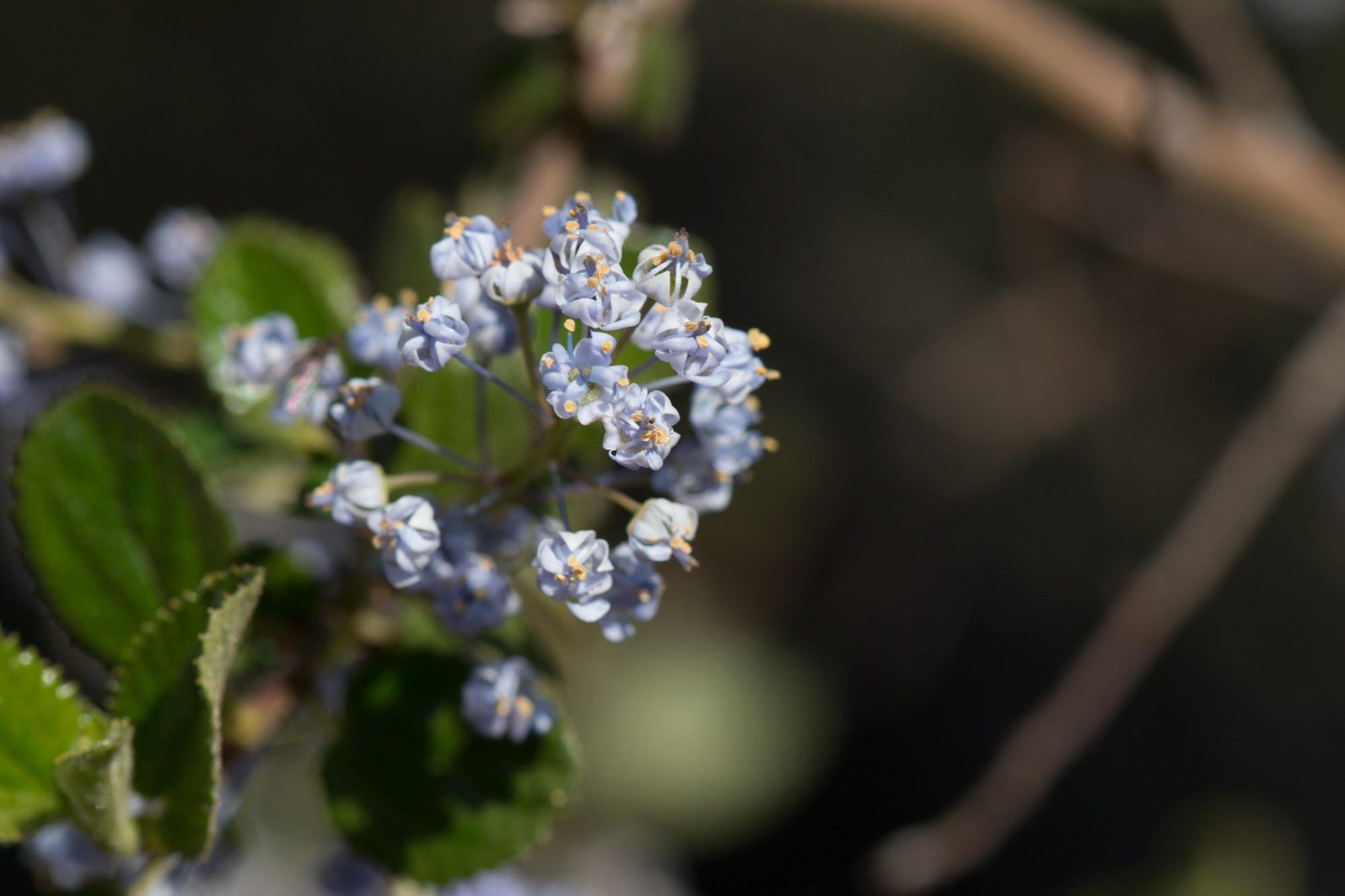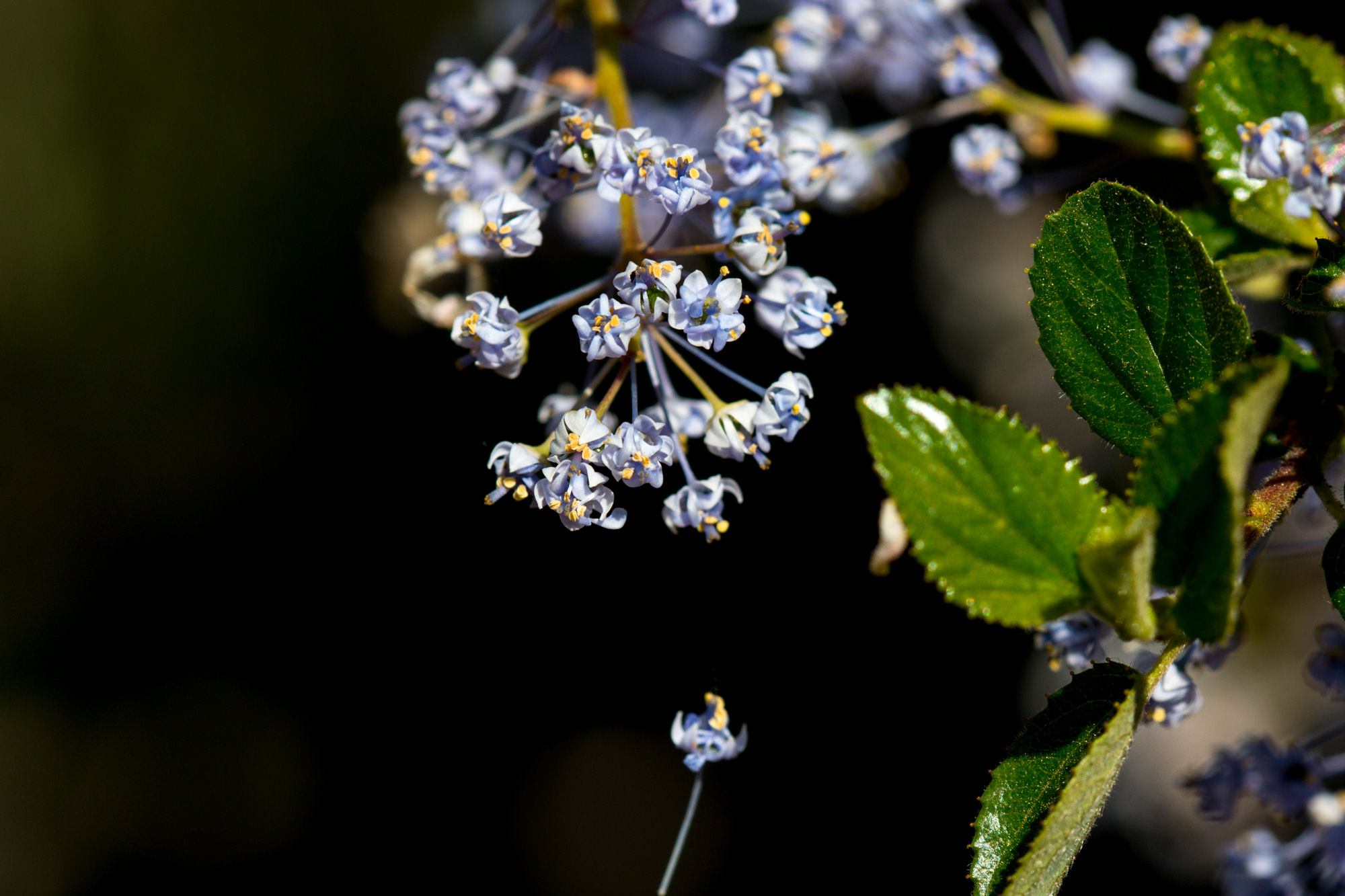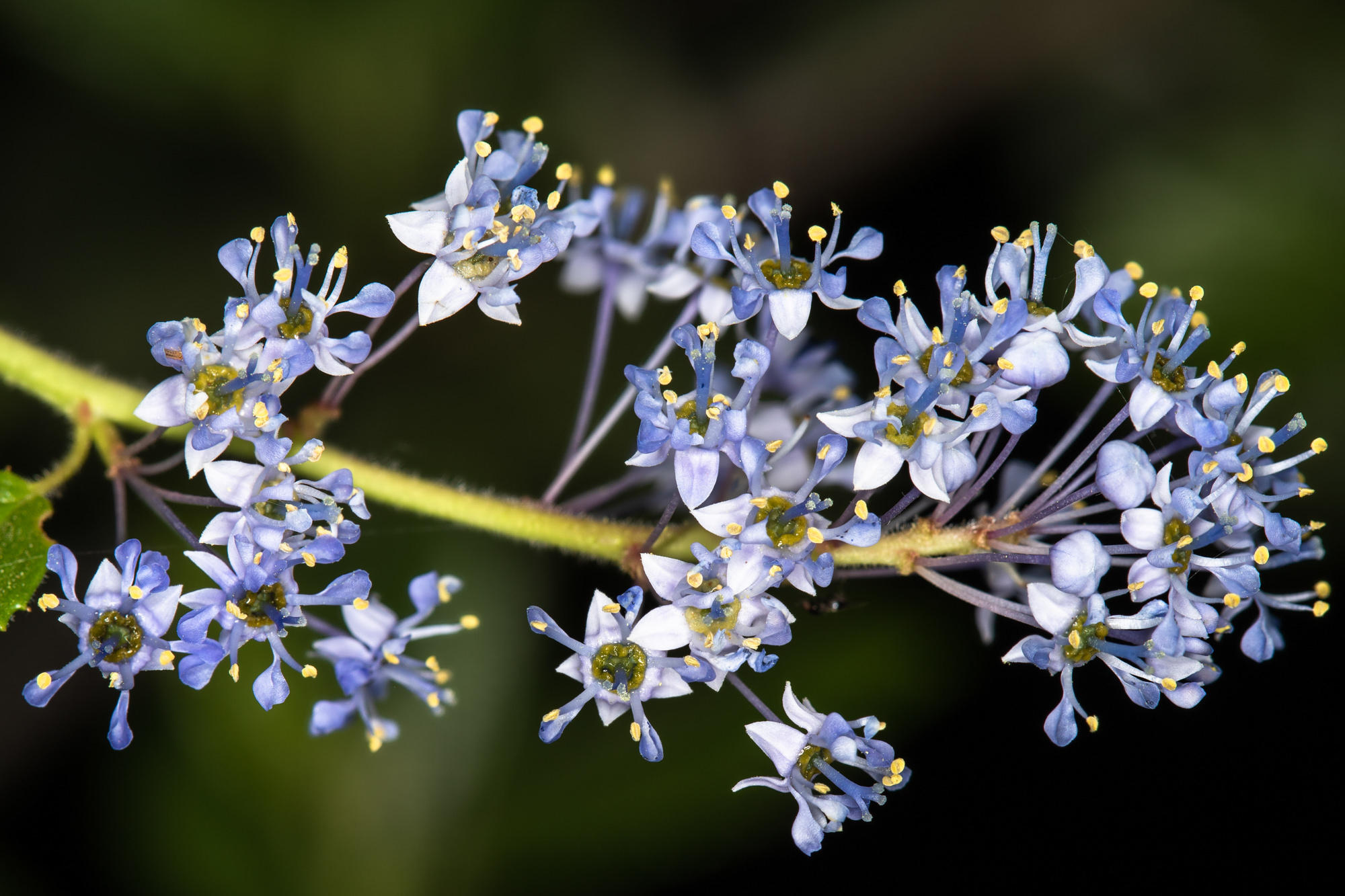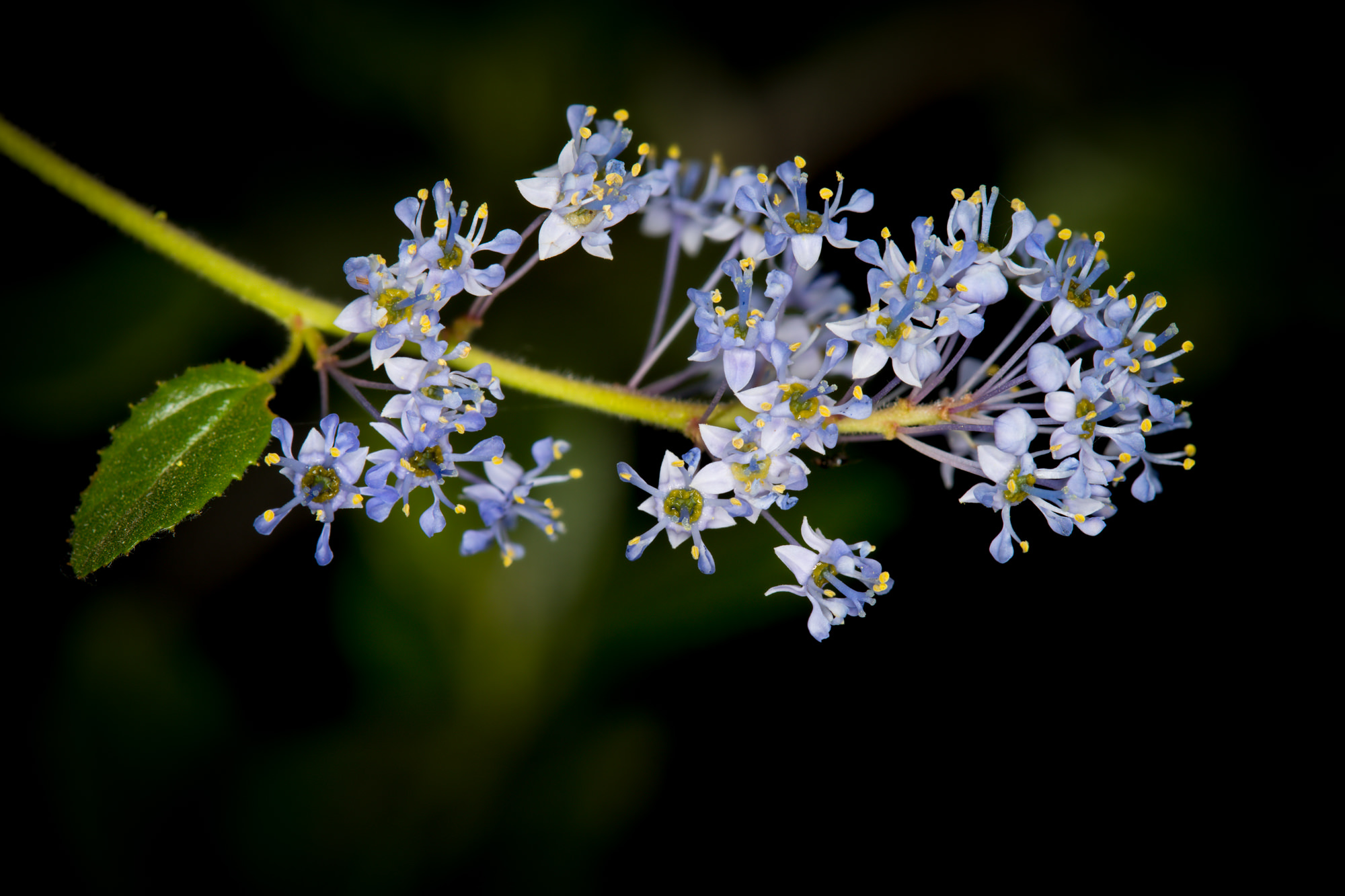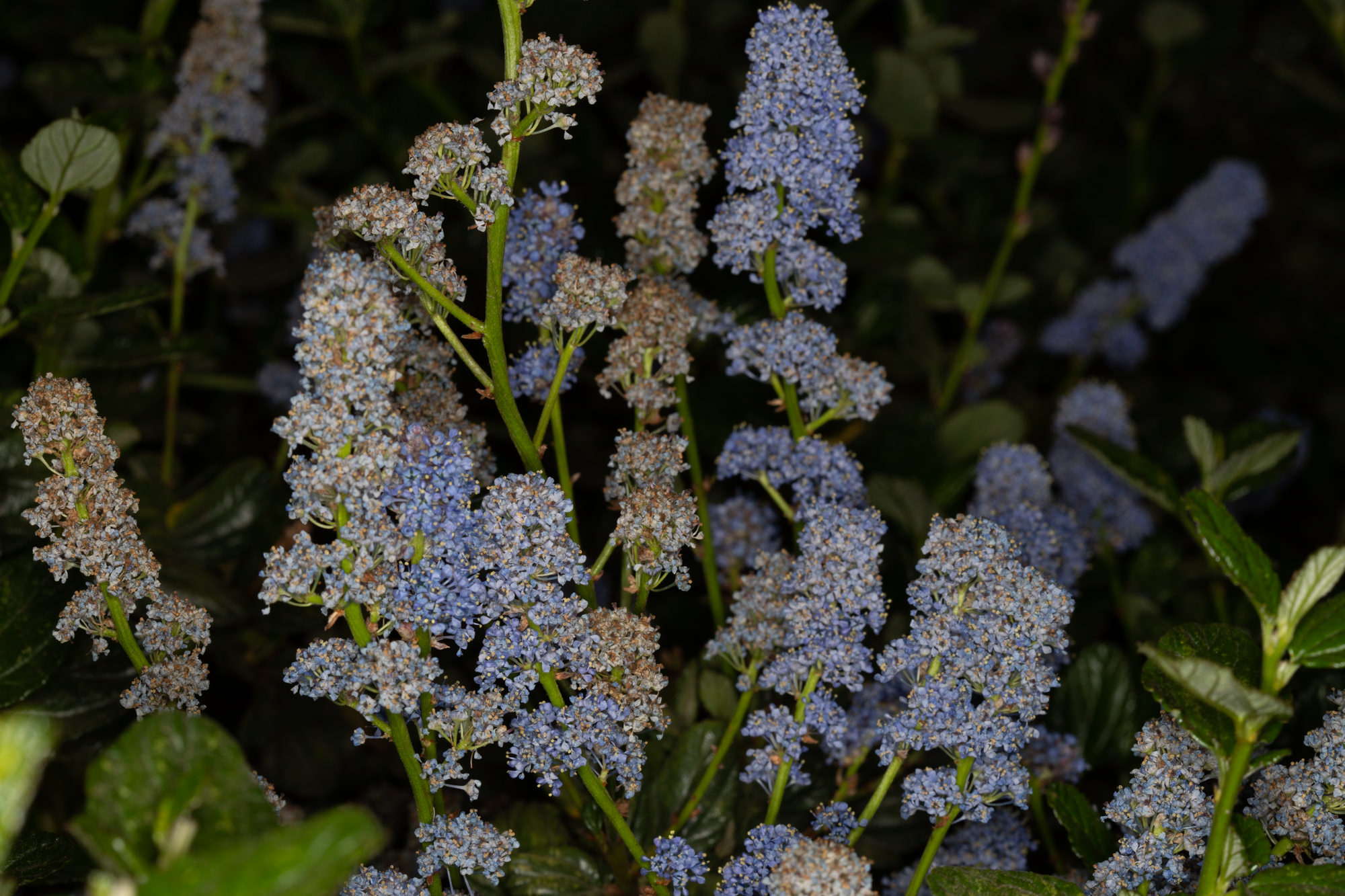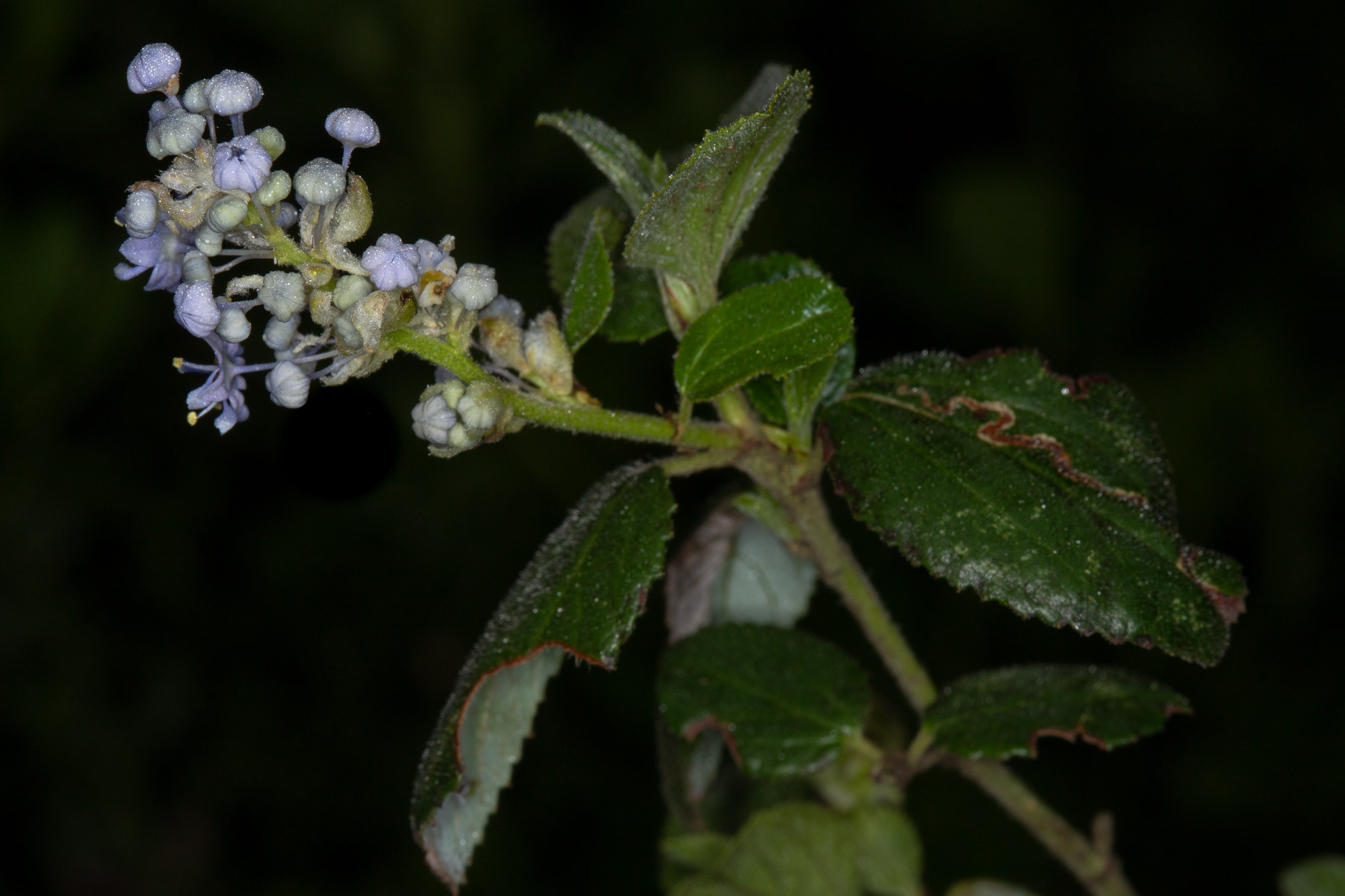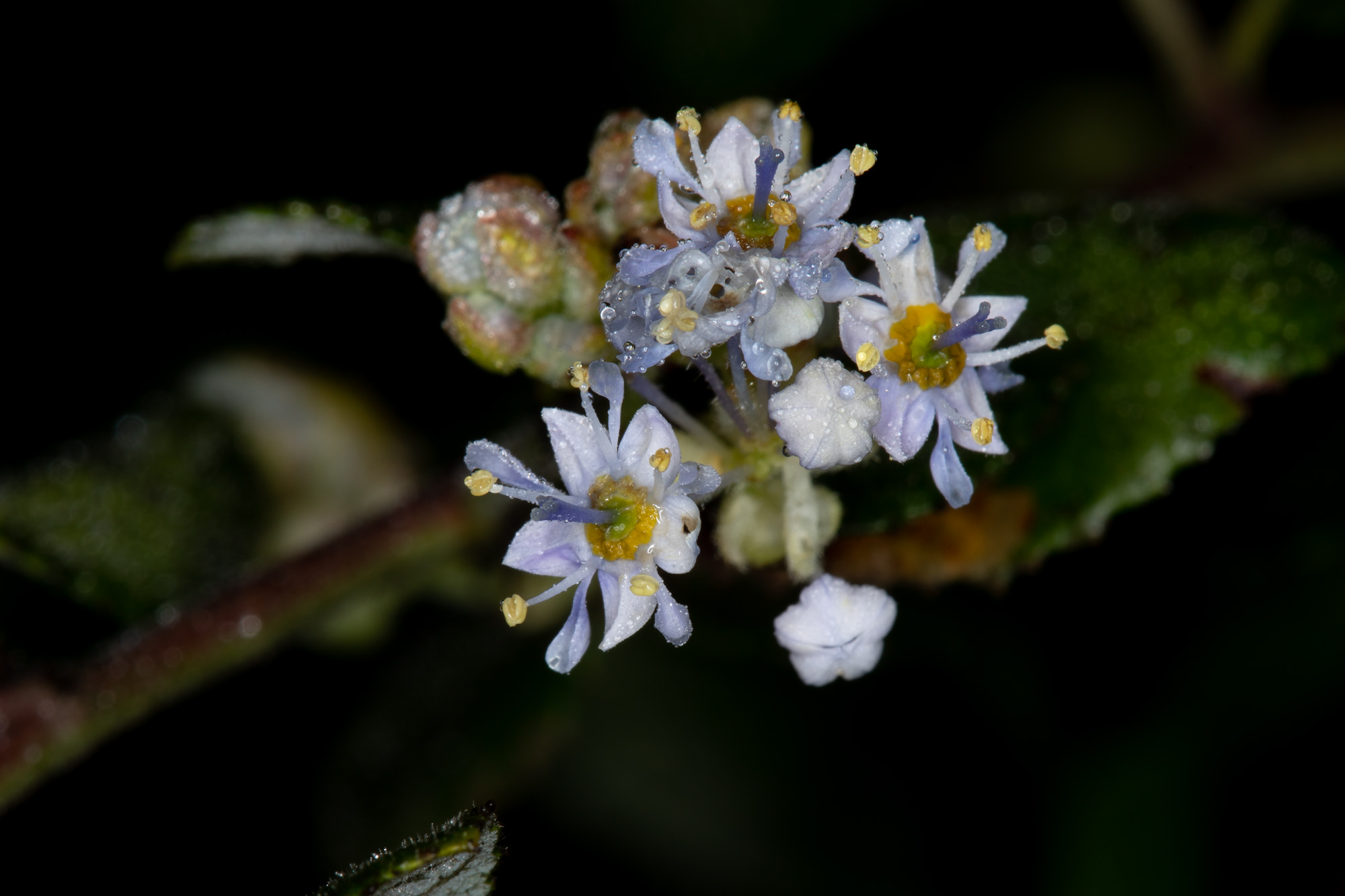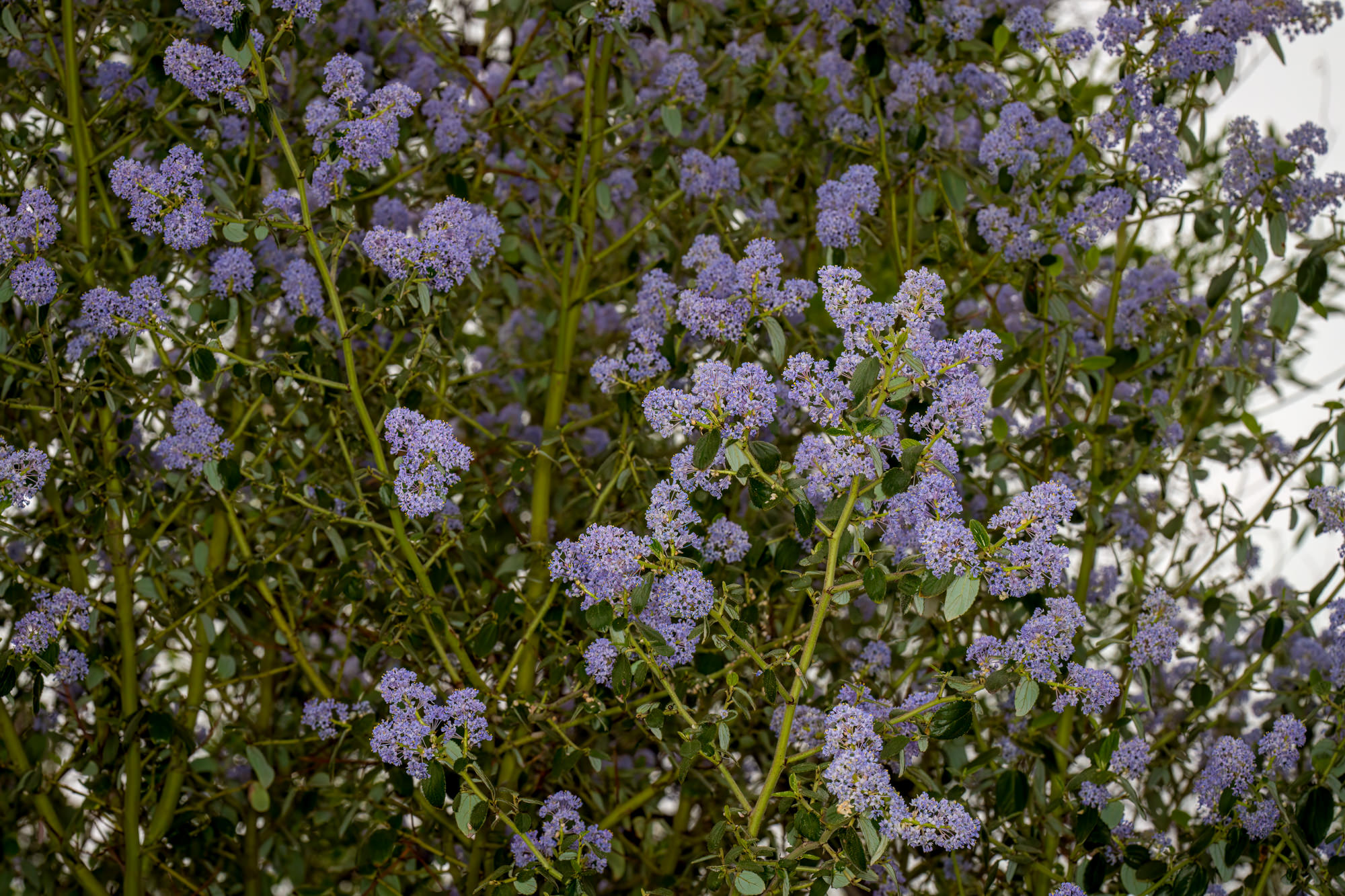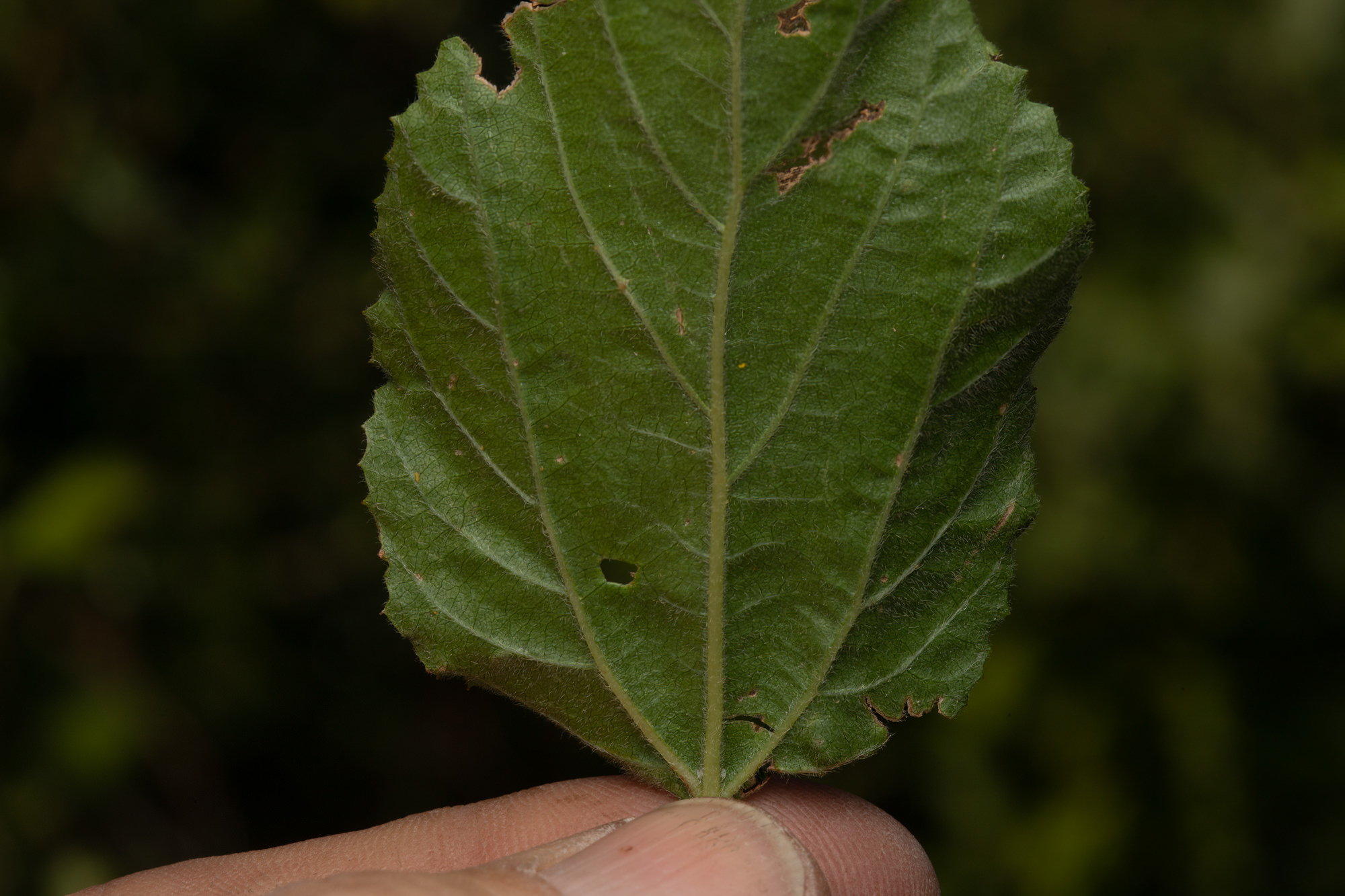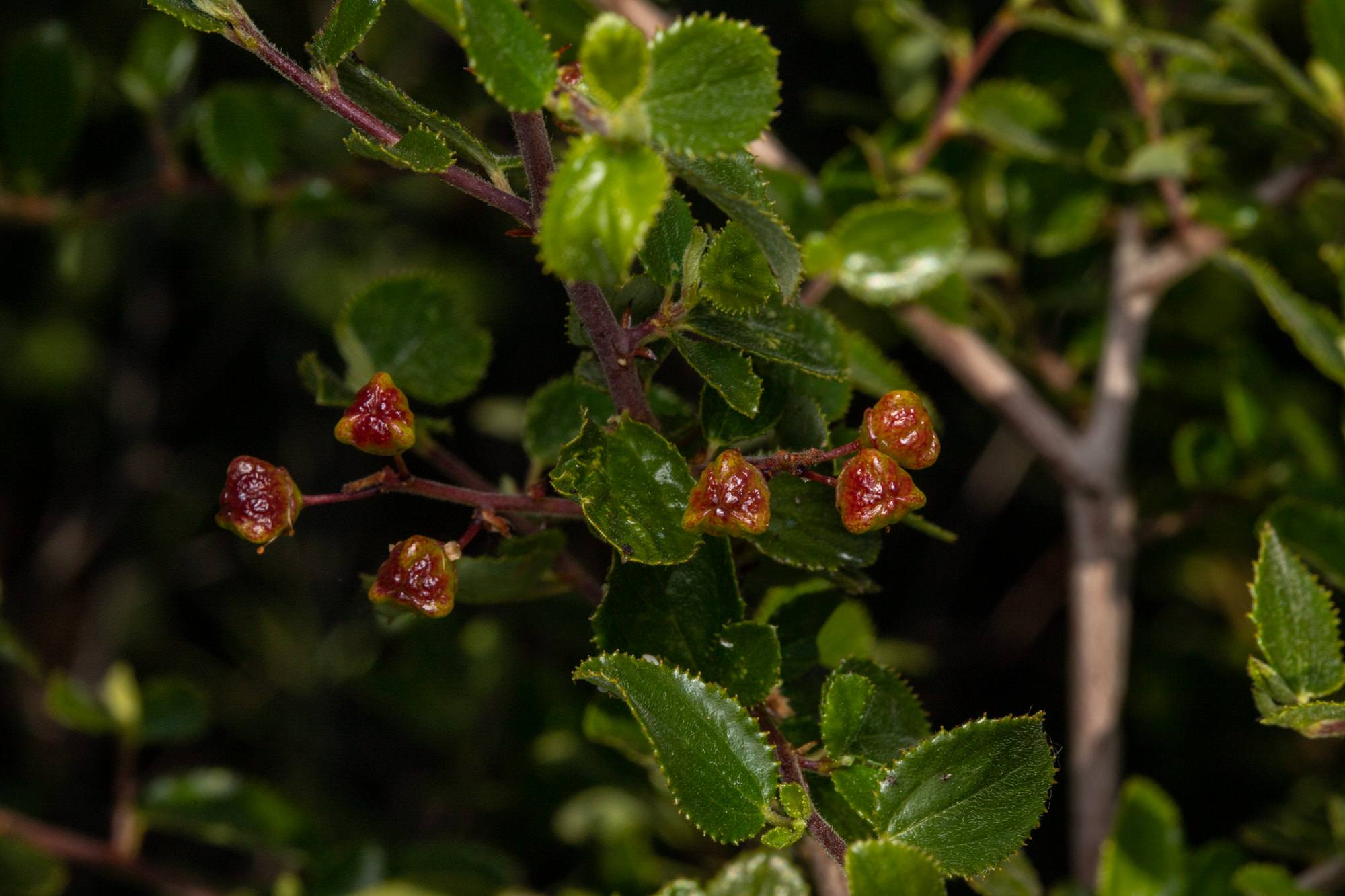Hairy Leaved Ceanothus
- Ceanothus oliganthus
| Common Name(s): | Hairy Leaved Ceanothus |
| Scientific Name: | Ceanothus oliganthus |
| Family: | Rhamnaceae (Buckthorn) |
| Plant Type: | Shrub or Tree |
| Size: | up to 20 feet |
| Habitat: | chaparral |
| Blooms: | February to April |
| Fire Response: | Germinate from Seed |
Hairy-Leaf Ceanothus - Ceanothus oliganthus is species of shrub in the buckthorn family Rhamnaceae and endemic to California. The Santa Monica Mountains are blessed with several species of shrubs/trees in this family. C. Oliganthus is not as common as other Ceanothus species - typically limited to north-facing slopes above 2400 feet that have gullies. This preferred habitat includes most of the coastal mountain ranges where chaparral dominates the slopes. The blue flowers and larger 3 veined leaves can help identify this plant.
This is a large, erect shrub approaching 5 meters (20 feet) in height. Reddish-tinted branches with a tree-like trunk. The evergreen leaves have 3 veins, are alternately arranged and may be up to 4 centimeters (almost 2 inches) long. They are dark green on top, paler and hairy on the underside, and are edged with small teeth. The flower cluster is a cluster or series of clusters of blue or purple flowers. The production of seeds begins when the plant is approximately 5 years old. The fruit of this shrub is a capsule containing seeds. These seeds can be explosively propelled away from the parent plant however, most seeds simply drop beneath the plant. Small mammals and insects consume seeds but the seed output is sufficient enough to collect in the leaf litter and soil to form a persistent seed bank. This is important because the plant cannot sprout from a stump after a fire and can only produce the next generation by germination of its seeds.
Fire Response: Ceanothus oliganthus is an obligate seeder (it can only grow from seeds). After a fire large numbers of seedlings suddenly germinate from the seed bank. Heat stimulates seed germination by increasing permeability to water. A side note - Ceanothus oliganthus rapidly sprouts from root crowns when branches are removed.
Source: https://vegetation.cnps.org/alliance/166
Link to Calflora.net - the best source of this fascinating information.
Name Origin: Ceanothus: from the Greek keanothus, a name meaning thistle or spiny plant which was applied by Theophrastus and/or Dioscorides to an Old World plant believed by some to have been Cirsium arvense, and reused by Carl Linnaeus when he published it in 1753.
oliganthus: producing few flowers, something that is certainly not true for this species.
Contributed by George Sherman
Featured Plants in the Rhamnaceae (Buckthorn) Family:
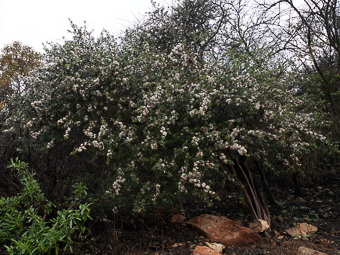
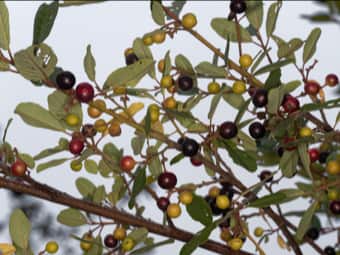
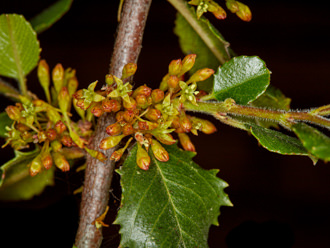
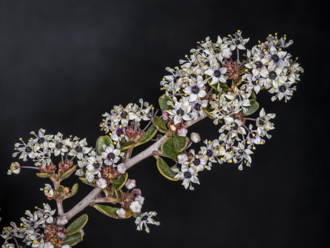
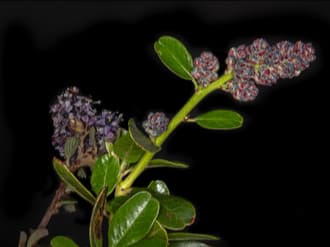
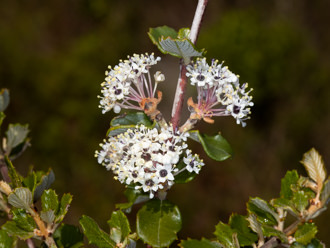
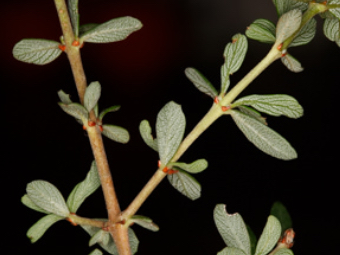
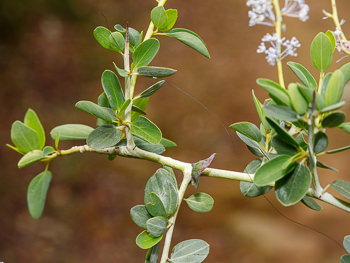
Last modified: August 21 2024 15:18:59.
Number of Images: 14
Image Size Total: 6,755,263
References:
Wildflowers of the Santa Monica Mountains, by Milt McAuleyFlowering Plants: The Santa Monica Mountains, Coastal and Chaparral Regions of Southern California, by Nancy Dale
Chumash Ethnobotany: Plant Knowledge Among the Chumash People, by Jan Timbrook
Leaf Shapes Primer - Botanical Terms for Leaves: - Link


